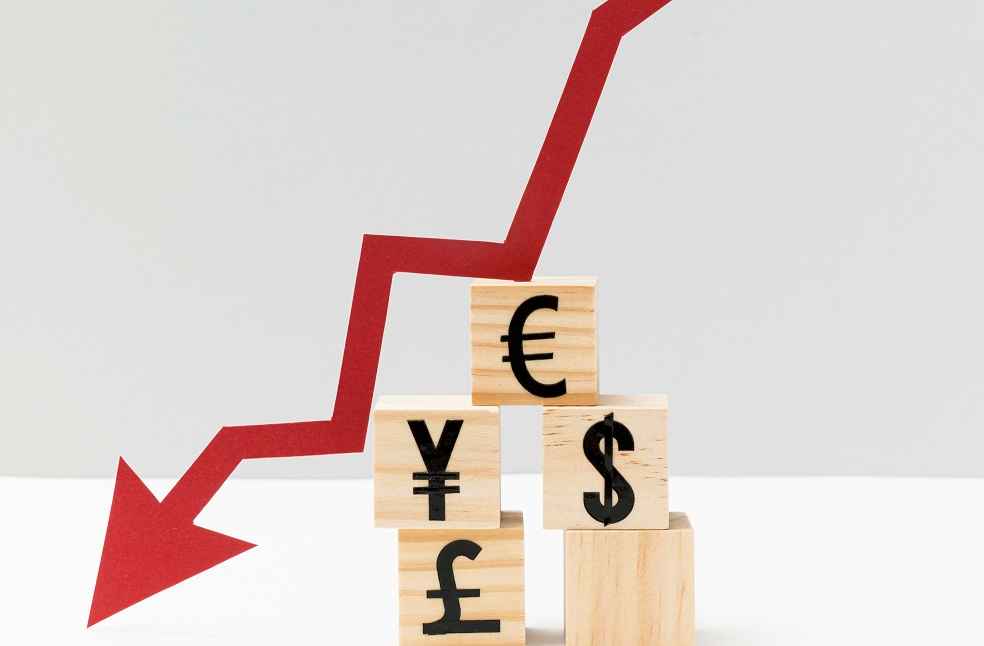Is the world’s largest economy on the brink of a recession, or is it merely experiencing a rough patch? Recent economic indicators in the United States have sparked concerns, with many analysts predicting a potential recession early next year.
Economic Concerns
Recession fears are mounting as market participants speculate on the Federal Reserve’s potential actions, with increased communications expected next week. The unemployment rate has risen to 4.3%, raising alarms about a weakening labour market and the economy’s vulnerability.
For a year, the U.S. Federal Reserve has maintained benchmark borrowing costs at a 23-year peak of 5.25%-5.50%. Some analysts worry that this prolonged tight monetary policy might be pushing the economy toward a recession. The Sahm Rule Recession Indicator, which has crossed the 0.50 threshold, historically signals the early stages of a recession in the U.S. While more data is expected before the September 18th meeting, an acceleration in employment trends in August could support a 50 basis point cut. However, the consensus currently favours a 25 basis point reduction.
Expert Opinions
Bloomberg rates strategist Simon White suggests the market might be prematurely anticipating a recession that may not occur until next year. He adds that while the Sahm Rule heightens recession concerns, it often lags and misses many equity downturns, making it an unreliable recession predictor. The recent unemployment rise was mainly due to an increased participation rate.

Brian Jacobsen, chief economist at Annex Wealth Management, expressed concerns about the Fed’s policies. “The Fed is on the verge of turning a win into a loss. Economic momentum has slowed to the point where a rate cut in September might be insufficient. They may need to implement a more substantial reduction to prevent a recession.”
Understanding a Recession
A recession is a significant decline in economic activity across the economy, lasting for an extended period and typically visible in GDP, real income, employment, industrial production, and sales. It is often defined as two consecutive quarters of negative economic growth. Recessions can result from reduced consumer and business spending, high unemployment, and financial crises. During a recession, businesses may cut back on production and investments, leading to job losses and decreased consumer confidence. Governments and central banks often respond with monetary and fiscal policies to stimulate the economy and mitigate the downturn’s effects.
Rise in Unemployment
The recent jobs report may prompt officials to reconsider their policies. Employment data revealed a slowdown in job growth to 114,000 in July, down from 179,000 the previous month, sparking concerns about the U.S. economy’s trajectory. The labour force participation rate increased, indicating more people were employed or actively seeking work. Late July data indicated that the labour market’s slowdown is primarily due to reduced hiring, not increased layoffs, with hiring falling to a four-year low in June.
In July, average hourly wages grew by 3.6% year-over-year, slightly down from June’s 3.8% increase. The Federal Reserve typically views wage growth between 3.0% and 3.5% as aligned with its 2% inflation target.
Mixed Signals

George Mateyo of Key Wealth remarked, “This represents an official ‘growth scare’ that the Fed must closely monitor. While the economy continues to expand and jobs are being added, predictions of an imminent recession seem exaggerated. Nonetheless, the economic landscape is shifting rapidly, and the Fed should be mindful of potential downside risks.”
Ryan Detrick from Carson Group added, “The crucial question is whether we’re heading straight into a recession or merely hitting a rough patch. We believe a recession is still avoidable, but the risks are increasing.”
Layoffs and Industry Impact
In 2024, firms in the United States and Canada have continued job reductions, following significant layoffs last year. This trend persists despite diminishing fears of a recession, as the Federal Reserve’s stance on interest rate cuts remains unclear. The layoffs span various industries, including technology, automotive, financial services, consumer and retail, health, manufacturing, logistics, and natural resources, potentially leading to thousands of job losses across these sectors.
Housing Market Concerns
David Burt of DeltaTerra Capital contends that U.S. homeowners face a significant insurance gap for wildfire and flood risks, totalling $28.7 billion annually. This underinsurance affects over 17 million homes, posing a potential $1.2 trillion threat to property values. Burt emphasised that while this scenario may not trigger a “global financial crisis,” it will have severe localised impacts comparable to the Great Recession in affected communities.
Insurance premiums in many U.S. regions do not accurately reflect the increasing risk of climate-related disasters. Last year, the National Oceanic and Atmospheric Administration recorded 28 weather disasters in the U.S., each causing at least $1 billion in damage. This year, with 15 such events already, the country is on track to match or exceed that record, excluding potential damage from Hurricane Beryl.

On a global scale, natural disasters have inflicted over $120 billion in damages so far this year, according to Munich Re. Only $62 billion of these losses were insured, significantly above the long-term average. Most of this uninsured damage has occurred in the U.S., primarily impacting homeowners.
Crucial Months Ahead
While claims of an impending US recession are gaining traction, the evidence remains mixed. Key economic indicators and expert opinions suggest caution but not certainty. The next few months will be crucial in determining whether the world’s largest economy is indeed heading for a downturn or merely navigating through turbulent times.
MOST READ | Elon Musk unveils ambitious plan to deploy humanoid robots next year



